Let’s recap what these two vehicles are again. The smaller of these two is the CX-60, while the bigger one is the CX-90. Both represent Mazda’s upmarket aspirations and more crucially, slot above two of the carmaker’s so-called bread-and-butter models—the CX-5 (for the CX-60) and the CX-9 (for the CX-90). This challenge puts Mazda in a unique situation—one which they solved by coming up with a totally new, clean sheet design.
Both the CX-60 and the CX-90 ride on what’s called the Large Product Group platform. Since it’s been engineered specifically for a flagship SUV program, it incorporates three key features: a longitudinally mounted engine, a rear-wheel (or rear-biased all-wheel) drive system, and the use of front double wishbones and rear multi-links. Moreover, the powertrain—engine, gearbox, and electric motor (yes, it’s electrified) are placed at the center. If it reads like the ingredients to a sports car, you’re not wrong. See, Mazda took learnings from the 30 years of honing the MX-5 and applied it to both vehicles.
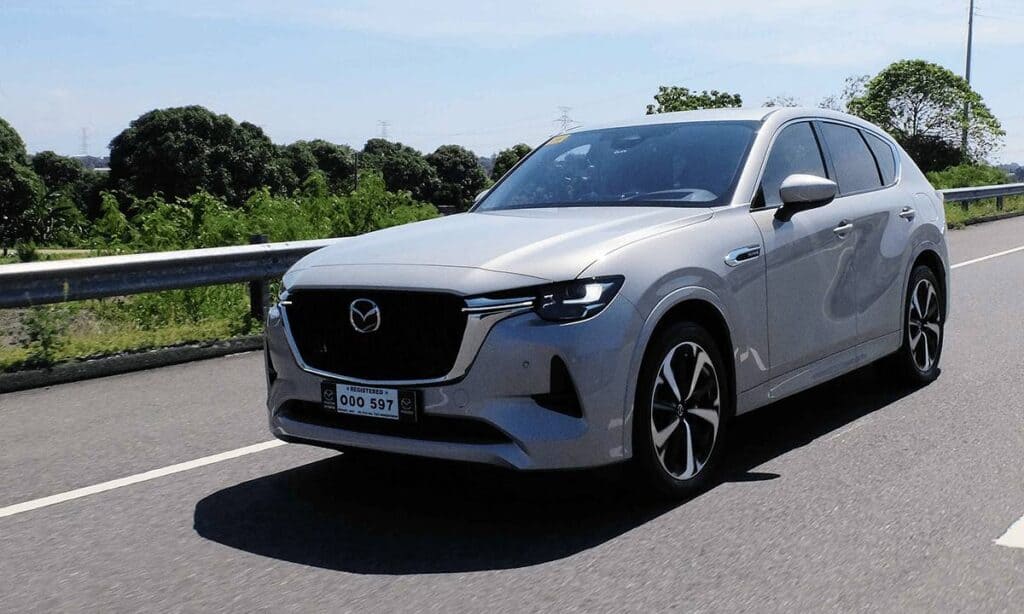
Likening an SUV that’s about twice the weight of their two-seater may seem weird, but it all makes sense once we go back to how Mazda defines, “fun-to-drive.” For them, it doesn’t necessarily mean having go-kart-like handling or a blistering quarter-mile time. Instead, it’s being able to drive a car as one wishes; to have the car maximize the driver’s ability, whether he or she be young, old, experienced, or inexperienced behind the wheel.
With the same underlying philosophy, it’s surprising how similar, yet different the CX-60 and the CX-90 behave on the road. It’s even more remarkable since these two share the same powertrain: a turbocharged hybrid 3.3-liter inline-6 mated to a multi-plate (torque converter-less) 8-speed automatic.
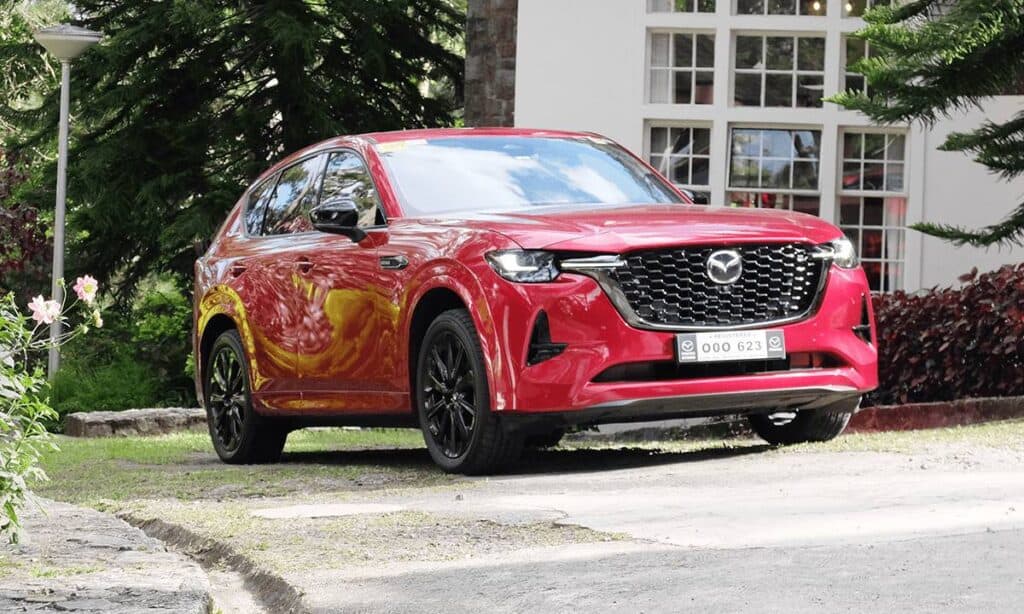
Starting with the CX-60 3.3 HEV Turbo-D Sport (the diesel), it’s a torque fest. With peak torque delivered starting at just 1,500 rpm, the engine never needs to work hard. A light tap of the accelerator is all that’s needed to accomplish just about any task. A slow-moving truck on the left lane of NLEX? Tap the gas. A pesky Fortuner that doesn’t want to give way? Tap the gas. It’s driving an SUV with a built-in cheat code.
Sadly, the brutal torque comes at a price: the indecisive transmission. Mazda assures us that a software update is on the way, but in the here and now, refinement isn’t its middle name. Switching over to a premium diesel helps trim the rough edges, but it will not tolerate a heavy right foot. Doing so would be like taming a wild horse. The key, I find, is to be gentle on the gas. Putting in the power slowly, like you’re driving a manual, and it calms down (sort of).
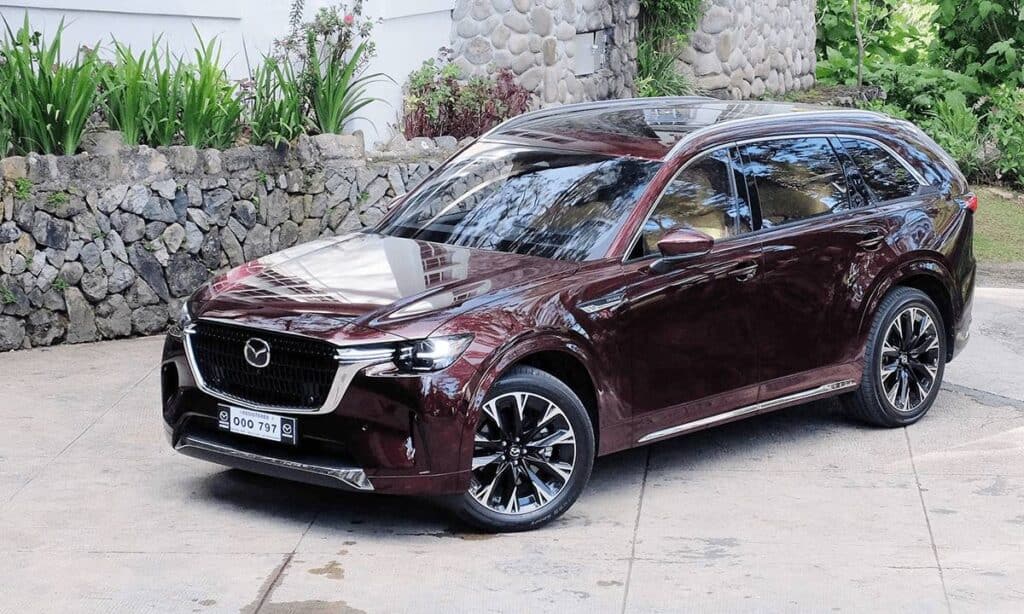
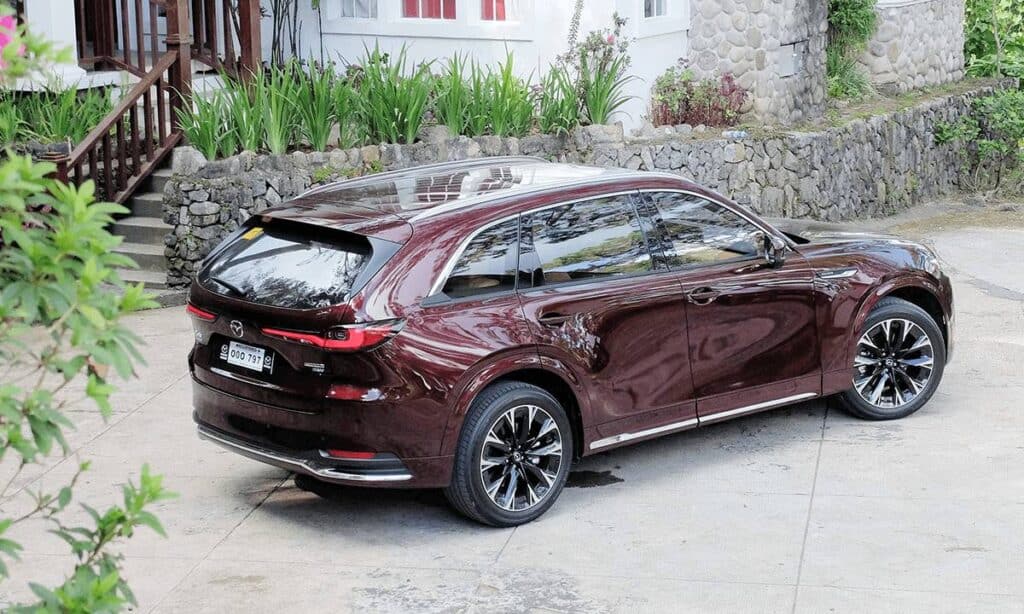
Switching over to the CX-60 3.3 HEV Turbo Sport (the gas) reveals much of the same. Like the diesel, it doesn’t break a sweat (switching over to at least 95 octane fuel also helps smoothen things out). There are two key differences, however. First, the transmission doesn’t buck as hard. Applying the same ginger effort on my right foot as I did with the diesel, results in a smooth enough experience. There are still a couple of strong jerks (and some gear selection sounds), but they’re few and far between. Second, punch the accelerator and it fills the cabin with the sonorous sound of the inline-6. On long stretches of open road, the aural quality is quite addicting and it’s something I’m happy to trade a few km/Ls with.
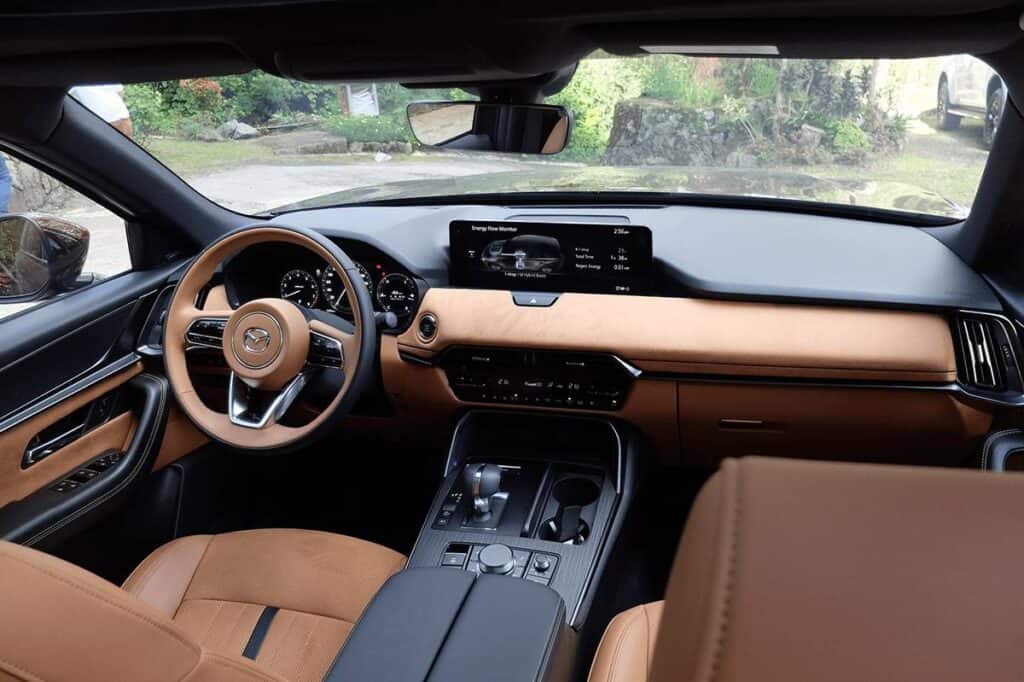
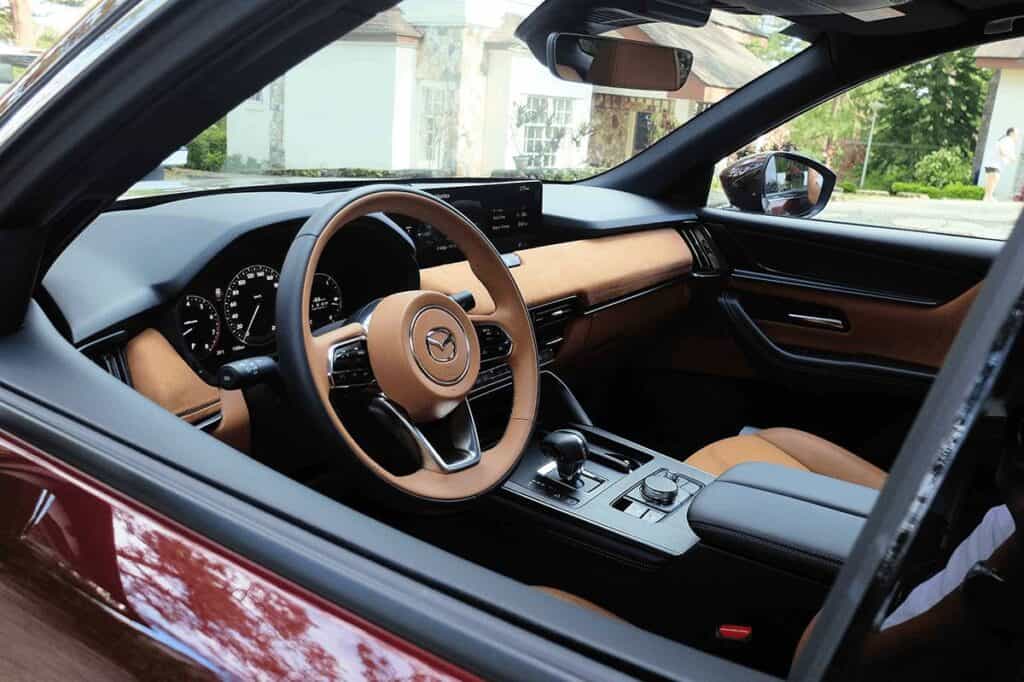
Handling-wise, the CX-60 is as Euro-centric as they come and with that, it trades a pliant ride for outright handling. Deep shocks and crashes are dissipated quickly, but smaller, unevenly spaced undulations will cause it to rock back and forth. There are a couple of times where it drives like there’s not enough suspension travel. It tops and bottoms out harshly like when approaching or leaving uneven bridge joints. On the other hand, toss it into a corner and it’s actually quite fun. It’s still no MX-5, but the way it communicates its intentions to the driver is similar. The brakes too are nice and solid.
This brings me to the CX-90, which may use the same powertrain and ride the same platform, but, oh-boy, the character is just way different. Despite having “just 284 horsepower” Mazda says it reaches 100 km/h in 7.6 seconds—just 0.7 seconds and 0.3 seconds off the gas-powered and diesel-powered CX-60, respectively. Based entirely on feel, I find that to be quite true. It’s more than up to snuff in motivating the 2.1-ton curb weight. It also makes passing traffic effortless. It takes a bit more prodding of the throttle to get it moving, but in doing so opens up the glorious inline-6. And unlike its application in the CX-60, the 8-speed automatic doesn’t shudder or jerk the cabin. Some complain about hesitation in power delivery, but again, it’s about re-learning the way you drive. Here, you rely on its in-gear acceleration rather than wait for a kick down.
Mazdas typically make the best cars to drive, and the CX-90 is no exception. For a car that’s more than five meters in length, it drives much smaller. Steering is nicely weighted and direct. Although, the heft is omnipresent in every maneuver. It rides remarkably well too, despite wearing standard 21-inch wheels.
Ultimately, both the CX-60 and CX-90 come across as SUVs that only Mazda could make. This is both a pro and a con. On one hand, it’s clear Mazda’s gone through great lengths to make both of them drive and feel special. Everything from its design to the way it behaves on winding roads, it’s delectable for as long as you “get it.” Compared to other SUVs in the marketplace, neither of these can’t be classified as “appliances.” On the other hand, for people who want something practical, they aren’t. Interior space is just adequate, and in the case of the CX-90, the third-row is still pretty much for kids. Clearly, these two are built for the drive than schlepping kids to school.
Regardless, these are the SUVs to be seen and drive in. The sacrifices are certainly worth it and as a result, both the CX-60 and CX-90 end up as being one of the sportiest choices in their respective segments to date. It makes concessions to everyday practicality for driving enjoyment and an upscale design. That, in the end, is its biggest strength.

